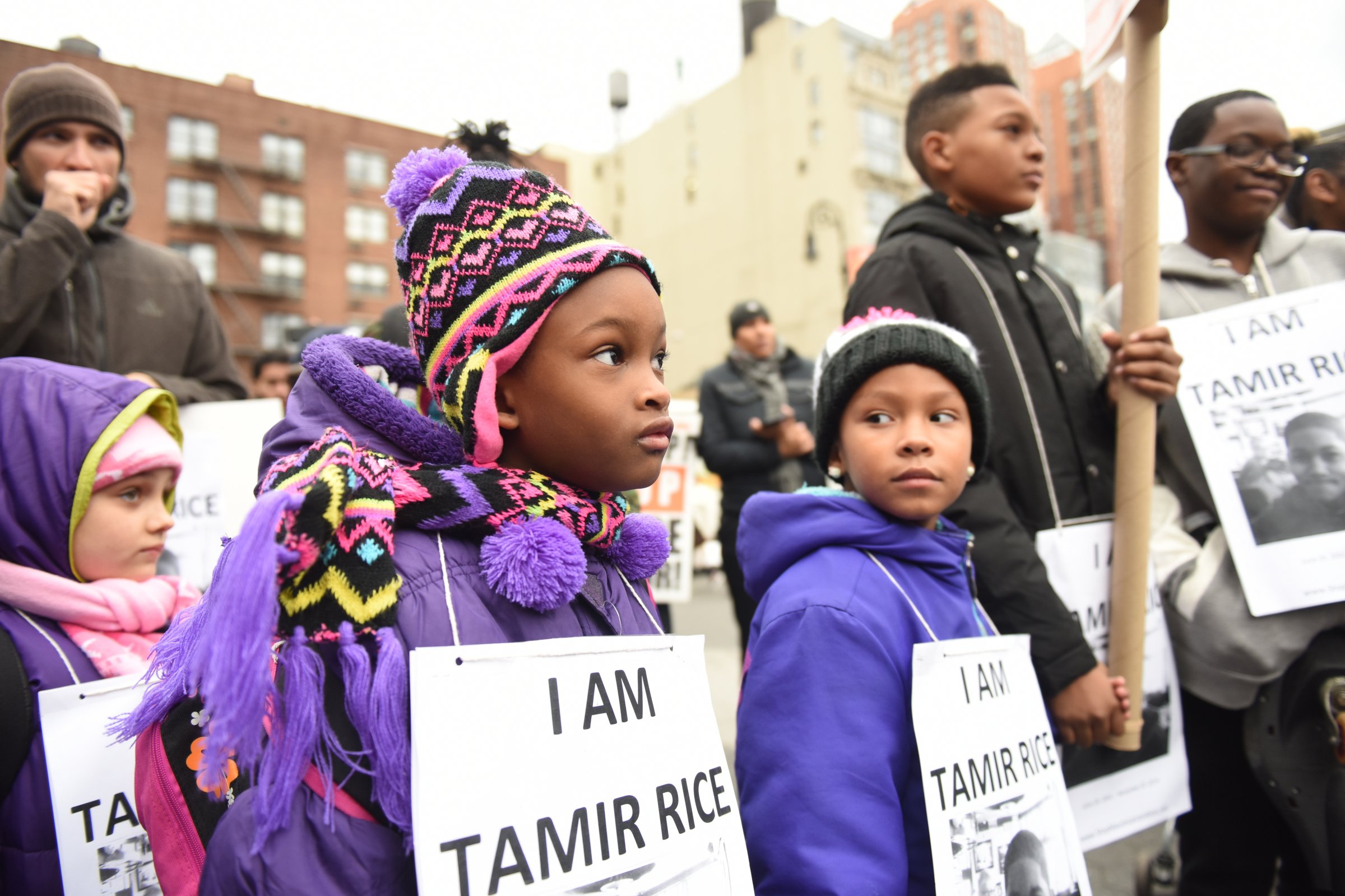
We celebrate Black History Month in February.
But history doesn’t just happen in the distant past. A powerful chapter in civil rights is unfolding at this moment.
So how can parents start good conversations with kids on the protests they see in the news?
Even in elementary school, says Patrisse Marie Cullors-Brignac, cofounder of #blacklivesmatter and director of Truth and Reinvestment at the Ella Baker Center for Human Rights, kids understand social ills. In fact, she believes, “as children we see them them the most.” And for many kids, it’s personal: Cullors-Brignac recalls being called a racial slur when she was only eight. “I remember how devastated I felt,” she says. “I couldn’t understand why it hurt so badly.” And since kids don’t always understand what they’re feeling, she says, “it’s important they get the opportunity to explore these issues with a parent or guardian.”
No child is too young to see injustice, or suffer from it. But even young children can do something about it, says Cullors-Brignac. “We have so many children who are actively engaged, not just going with parents, but speaking out in their classrooms, calling out inequalities where they see it, creating little after school clubs where they talk about what they see.” Parents can encourage their kids to speak up for what they believe, Cullors-Brignac says, by asking them “what they feel most concerned about”—and then providing them with resources and connections to get involved.
As kids get into middle school, they may not be as willing to talk about themselves. So Kenneth Braswell, Executive Director of Fathers Incorporated and author of Daddy, There’s a Noise Outside, a book he wrote in response to his young son’s questions about recent protests, says that it’s a good time to ask kids about their thoughts on current events that bring up questions of justice. And, Braswell says, to ask them what their friends think—and their opinion of that. “We think our kids are not having these conversations,” he says. “They are having them, but they’re having them in their own context.”
By high school, Braswell says, kids are old enough to consider a broader definition of protest. “Marching in the street, blocking the highway, that’s one form,” Braswell says. But there’s also “signing a petition, writing a letter, writing an editorial, volunteering in your community, helping an organization you that you feel strongly about with respect to issues.” Parents can help kids get engaged, says Braswell, by encouraging them to ask themselves, “What can I do?”
“The best way to protest something I don’t like,” Braswell says, “is to do something about it.”
More Must-Reads from TIME
- Inside Elon Musk’s War on Washington
- Why Do More Young Adults Have Cancer?
- Colman Domingo Leads With Radical Love
- 11 New Books to Read in February
- How to Get Better at Doing Things Alone
- Cecily Strong on Goober the Clown
- Column: The Rise of America’s Broligarchy
- Introducing the 2025 Closers
Contact us at letters@time.com